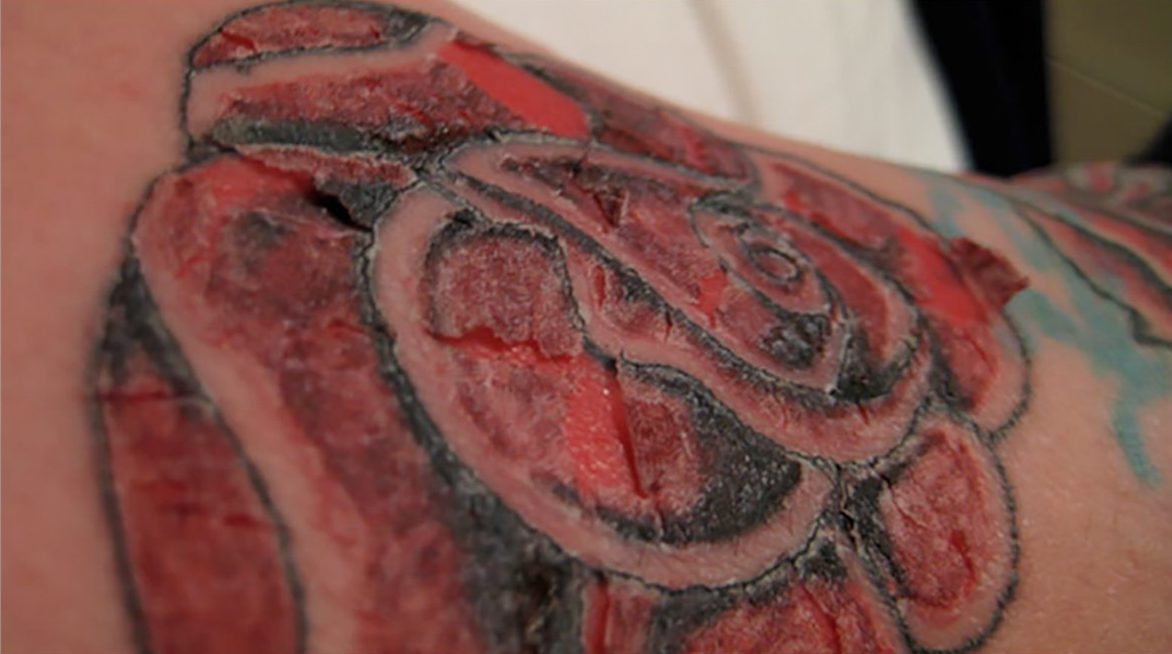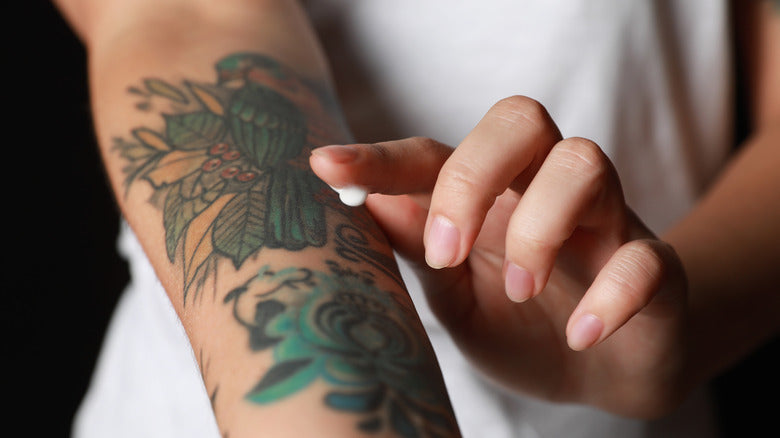Getting a new tattoo is exciting, but once the session ends, your focus should shift to healing. A fresh tattoo is essentially an open wound, and just like any wound, it needs time and care to fully recover. So, how long does it take for a tattoo to heal, really?
In this comprehensive guide, we’ll explore the tattoo healing process stages, what to expect day by day, and what “fully healed” actually means. Whether you're new to tattoos or simply want to improve your aftercare game, this article will walk you through the complete tattoo healing timeline.
How Long Does It Take for a Tattoo to Heal?
The healing time for a tattoo varies depending on its size, placement, and how well you care for it. Typically, the outer layer of skin (the part you can see and touch) heals in 2–3 weeks. However, the deeper layers of skin (where the ink sits) take much longer—up to 3–6 months—to heal completely.
So if you’re wondering, how long the tattoo heal, the short answer is:
- Surface healing: 2–3 weeks
- Complete internal healing: 6–12 weeks
This difference explains why a tattoo can look great after a month but still be healing under the skin.
Tattoo Healing Timeline: What to Expect Day by Day
Every tattoo heals a bit differently, but here’s a typical day by day tattoo healing process to help you track your progress:
Day 1–3: Inflammation and Weeping
- Your tattoo may feel sore, warm, or swollen.
- A clear fluid (plasma), mixed with some blood and ink, may seep from the tattoo.
- It will be covered with a bandage or film by your artist.
This is the beginning of the tattoo healing process, when your immune system kicks in.

Day 4–7: Scabbing and Itching Begins
- A thin scab will begin to form over the tattoo.
- Peeling may begin around Day 5.
- The tattoo may feel itchy—do not scratch!
At this point, many people ask:
How long does it take for a tattoo to peel?
Most tattoos start to peel around Day 3 to Day 5, and continue peeling for about a week.

Day 8–14: Peeling and Flaking Intensify
Flakes of skin peel away, often with faded ink in them—this is normal.
Your tattoo may look slightly cloudy or dull during this stage.
The scabs should fall off naturally—don’t pick!
- Flakes of skin peel away, often with faded ink in them—this is normal.
- Your tattoo may look slightly cloudy or dull during this stage.
- The scabs should fall off naturally—don’t pick!

This part of the tattoo healing progression is often where people worry because the ink doesn’t look vibrant. Be patient!
Day 15–30: Outer Healing Finishes
- Peeling stops, and the skin begins to look more normal.
- The tattoo regains some vibrancy, but the area may still feel dry or slightly rough.
- There may still be slight itching or sensitivity.
Your tattoo healing time for the surface is now nearing completion, but deeper healing continues.
Tattoo Healing Process Stages
Let’s break down the healing into larger stages. This helps answer questions like “How long do tattoos take to heal?” or “When is a tattoo fully healed?”
Stage 1: Wound Response (Day 1–3)
Your body reacts to the trauma by sending white blood cells to the area. There’s redness, oozing, and possibly swelling.
Stage 2: Scabbing & Peeling (Day 4–14)
This is where scabs form and flaking skin begins. This phase is critical—any scratching or picking can lead to scarring or ink loss.
Stage 3: Regeneration (Week 3–4)
New skin begins to form. The tattoo looks dull but is no longer flaking or scabbing.
Stage 4: Maturation (Month 2–3+)
The tattooed area continues to repair itself at a deeper level. It becomes smoother and more vibrant. Only now can we say your tattoo is fully healed.
So, how long does it take a tattoo to fully heal?
For most people, 6–8 weeks, sometimes longer for large or complex tattoos.
Tattoo Before and After Healing
A healed tattoo often looks quite different from a fresh one. Let’s compare:
- Before Healing: Bright, swollen, possibly glossy or shiny with fluid
- During Healing: Dull, scabbed, flaky, with possible discoloration
- After Healing: Settled colors, even skin texture, matte finish
Don’t worry if your tattoo looks “faded” or patchy during healing—it’s likely part of the tattoo healing stages day by day, not a sign of a problem.
Factors That Affect Tattoo Healing Time
Several things can affect how long will a tattoo take to heal:
Tattoo Size
- Larger tattoos take longer to heal, especially if they cover joints or high-movement areas.
Placement
- Tattoos on areas with thinner skin (hands, feet, ribs) or areas with friction (inner arm, waistline) can heal more slowly.
Skin Type
- Oily, sensitive, or dry skin may react differently to tattooing and impact healing time.
Aftercare Routine
- Not following a proper routine can slow healing or cause infection.
Lifestyle Factors
- Smoking, poor diet, or exposure to sunlight can delay healing.
Tips to Support the Tattoo Healing Process
Proper aftercare is essential. Follow these general guidelines:
✅ Do:
- Gently wash the tattoo with mild, unscented soap.
- Pat dry—don’t rub.
- Apply a thin layer of fragrance-free lotion or ointment.
- Wear loose, clean clothing over the area.
- Keep the tattoo out of direct sunlight.
❌ Don’t:
- Scratch or pick at scabs.
- Soak the tattoo (no pools, baths, or hot tubs).
- Use alcohol or peroxide.
- Expose the tattoo to sweat or tight clothing too soon.
These steps are key to a smooth tattoo healing progression.
Final Thoughts: Be Patient With Your Tattoo’s Healing
So, back to the big question—how long does it take for a tattoo to heal? The answer isn’t one-size-fits-all, but with good aftercare and a little patience, your tattoo will heal beautifully over the coming weeks.
Understanding the tattoo healing stages, knowing what to expect day by day, and staying committed to care can make all the difference between vibrant ink and long-term disappointment. Respect the process, and your skin will thank you.









Share:
Tattoo Pain Chart Guide: Where Tattoos Hurt Most and Least (Male & Female)
10 Mistakes New Tattoo Shop Owners Make (And How to Avoid Them)